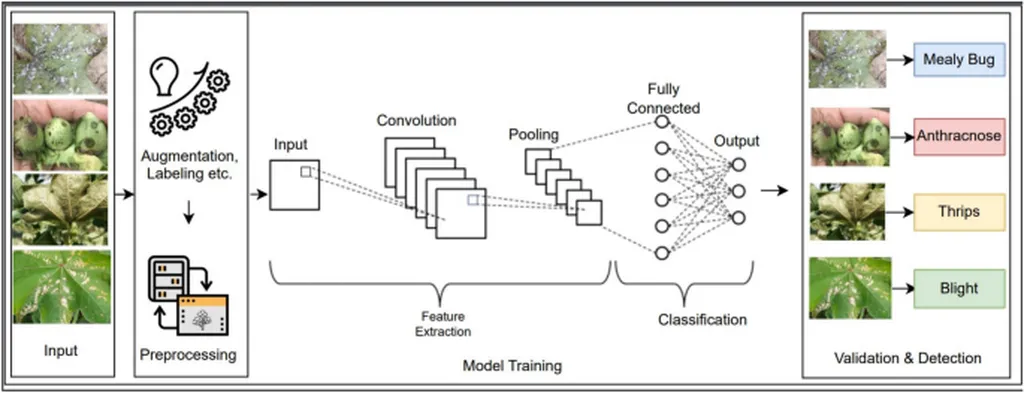In the relentless pursuit of enhancing cotton production, researchers have developed a cutting-edge deep learning approach that promises to revolutionize disease and pest classification in cotton crops. Published in the journal *Plant Methods*, this study introduces a hybrid model that combines the strengths of convolutional neural networks (CNNs) and Vision Transformers (ViT) to achieve unprecedented accuracy in identifying cotton diseases and pests.
The research, led by L. K. Dhruw from the Indian Institute of Technology Kharagpur, addresses a critical gap in current classification methods. While existing techniques excel in either local feature extraction or global context capture, they often fall short in integrating both aspects effectively. The hybrid CNN-ViT model developed in this study bridges that gap, offering a comprehensive solution that leverages the local feature extraction capabilities of CNNs and the global context capture of ViTs.
The study evaluated three advanced models: a CNN-based model, a ViT-based model, and the hybrid CNN-ViT model. Trained on a dataset comprising eight classes of cotton diseases and pests, including aphids, armyworm, bacterial blight, cotton boll rot, green cotton boll, healthy, powdery mildew, and target spot, the hybrid model emerged as the top performer. It achieved an impressive average test accuracy of 98.5%, outperforming the CNN model’s 97.9% and the ViT model’s 97.2%.
“The hybrid model effectively combines the strengths of CNN’s local feature extraction and ViT’s global feature capture, resulting in superior classification accuracy across most classes,” said L. K. Dhruw, the lead author of the study. This enhanced accuracy is a game-changer for the agriculture sector, as it enables more precise and timely identification of diseases and pests, which is crucial for effective management and control.
The implications of this research extend beyond mere classification accuracy. By integrating these models with autonomous platforms for spraying chemicals, farmers can benefit from real-time, data-driven decision-making. This integration could lead to more efficient use of resources, reduced environmental impact, and ultimately, higher yields. “Future research should focus on expanding the dataset to include more diverse diseases and pests and integrating the models with autonomous platforms for spraying the chemicals, thus facilitating real-world adoption and application in agricultural settings,” Dhruw added.
The study’s findings open up new avenues for precision agriculture, a field that is increasingly relying on advanced technologies to optimize crop production. As the agriculture sector continues to evolve, the adoption of such innovative solutions will be pivotal in addressing the challenges posed by diseases and pests, ensuring sustainable and productive cotton farming.
In the broader context, this research underscores the potential of deep learning in transforming agricultural practices. By harnessing the power of AI, farmers can achieve greater precision and efficiency, ultimately contributing to food security and economic stability. The hybrid CNN-ViT model developed by Dhruw and his team is a significant step forward in this direction, setting the stage for future developments in the field of precision agriculture.

